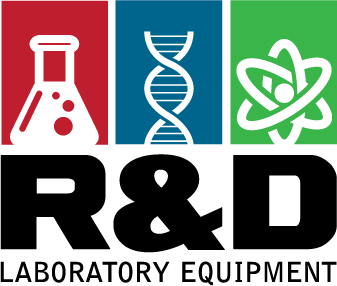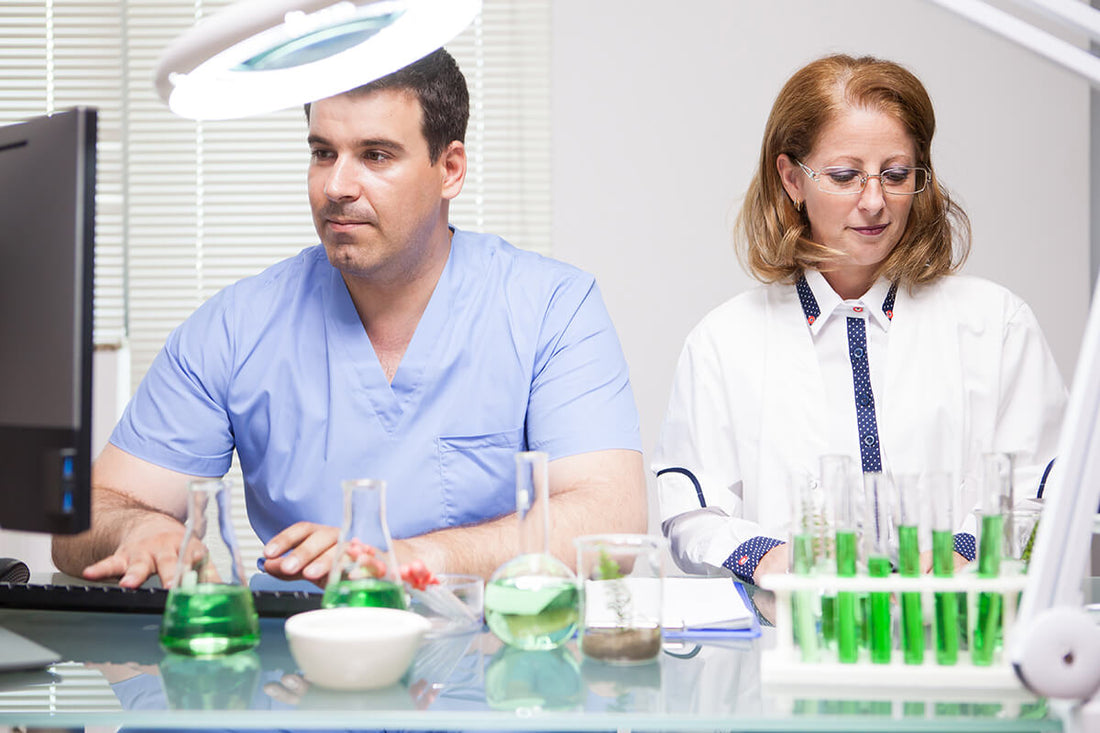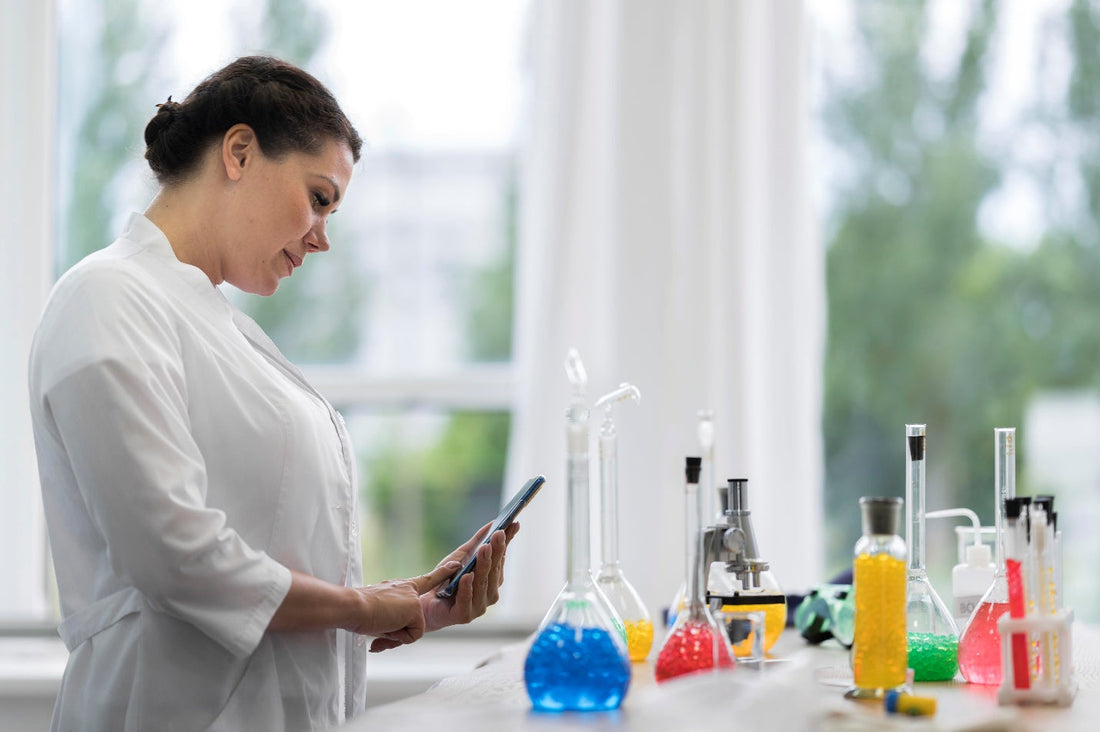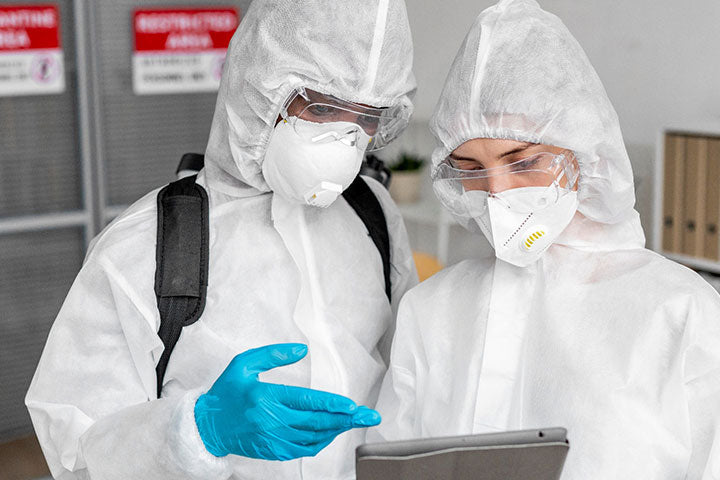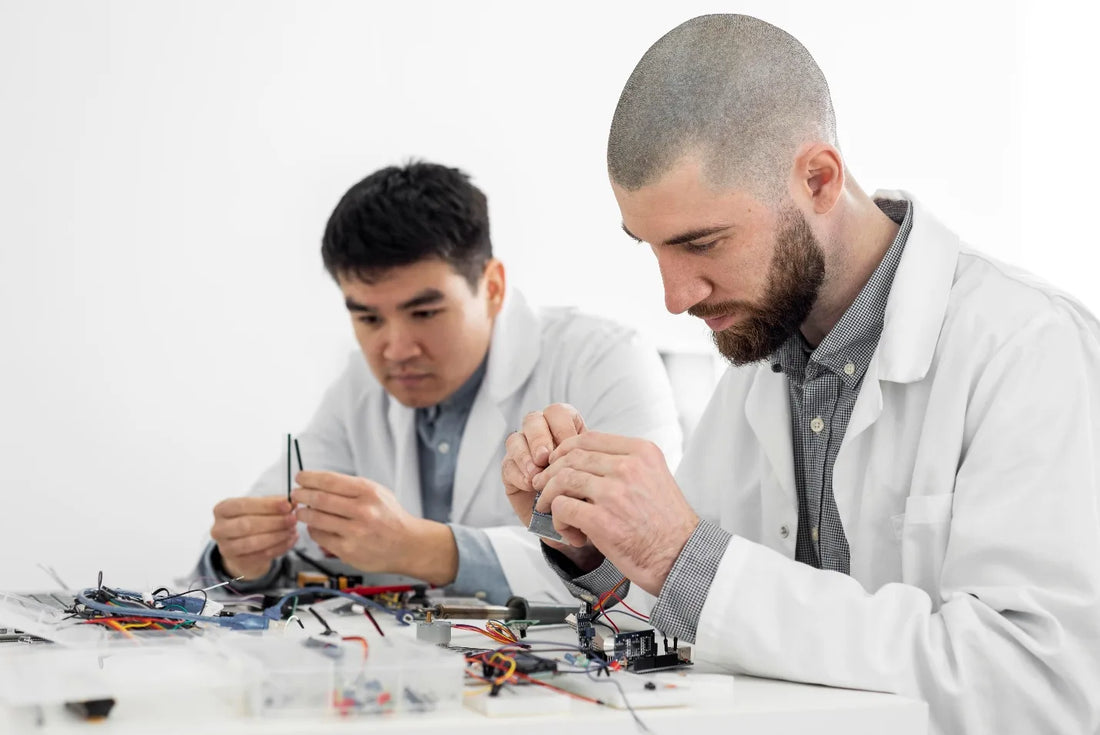Microbiology Labs: Affordable Used Equipment Buying Tips

Summary:
-
Buying used lab equipment saves 30–60% of the budget and supports sustainability.
-
Essential microbiology equipment includes microscopes, incubators, autoclaves, centrifuges, biosafety cabinets, and pipettes.
-
Reliable sources: certified resellers, university surplus programs, and government auctions.
-
Key evaluation steps include checking calibration, service logs, physical condition, certifications, functional tests, and spare parts availability.
-
Safe buying tips: stick to reputable vendors, demand warranties, verify compliance, and test before purchase.
-
Cost-saving strategies include buying refurbished instead of "as is," utilizing trade-in programs, negotiating more extended warranties, and comparing multiple vendor quotes.
-
Mistakes to avoid: skipping inspections, ignoring calibration, overlooking compatibility, neglecting seller reputation, and forgetting after-sales support.
Introduction: Why Buying Used Lab Equipment Makes Sense
The global secondhand market is growing significantly, and experts project it will reach $350 billion by 2027. This expansion reflects a shift towards eco-friendly and cost-effective alternatives to new products. New scientific equipment accounts for 40-50% of the average lab startup budget, making affordability a serious challenge. That's why more laboratories are turning to used scientific equipment.
For many labs and research institutions, this is not just about cost, but also smart resource allocation. Buying used equipment can help you save 30-60% of your budget, allowing you to use the savings for other critical needs, such as reagents and staff training. Sustainability is also an added benefit, as it helps your business achieve corporate social responsibility and its climate objectives.
In short, buying second hand lab equipment is not just about your budget but also efficiency. This guide will walk you through essential equipment checklists, evaluation methods, safe purchasing tips, and cost-saving strategies you will need to equip your microbiology lab without compromising on quality or safety.
Essential Microbiology Lab Equipment Checklist
Before shopping for refurbished equipment, it's essential to have a list of the crucial equipment every microbiology lab needs. While the exact setup may vary depending on your lab's focus, the following items are standard for every microbiology lab:
Microscope
The microscope is the cornerstone of microbiological research. They are essential for tasks such as examining bacterial cultures or tissue samples. Refurbished microscopes can cost 40-50% less than new units. Before buying, check calibration records and ensure the optics are intact.
Incubators
Incubators are critical for maintaining the proper environmental conditions to grow microbial cultures. They keep the samples at consistent temperatures, which allows for optimal microbial growth during experiments. Common types of microbiological incubators include standard incubators, CO2 incubators, and shaker incubators.
Autoclaves and Sterilizers
According to the Centers for Disease Control (CDC), inadequate sterilization is one of the top causes of contamination in microbiology labs. Autoclaves are used to sterilize lab equipment, media, and tools, preserving the integrity of your experiments and ensuring safety in the lab.
This sterilization method uses high-pressure steam to eliminate contaminants, ensuring a sterile lab condition.
Centrifuges
Centrifuges are used to separate fluids, cells, and other particles in a sample by spinning them at high speeds. This process is essential in a variety of microbiological applications, including sample preparation and the study of microorganisms. When buying used centrifuges, check for signs of rotor damage or corrosion. Also, inspect the machine's service history.
Biosafety Cabinets
Safety is paramount in a microbiology lab. Regulation requires all labs to have biosafety cabinets equipped with HEPA filters to prevent microorganisms from escaping into the lab. These cabinets are vital for protecting both lab personnel and samples from contamination. All biosafety cabinets must meet NSF/ANSI 49 standards for safe operation.
Pipettes
Pipettes are used to transfer small volumes of liquid with precision. In microbiology labs, pipettes are crucial for preparing samples and conducting experiments with exact measurements.
Where to Find Reliable Used Scientific Equipment
Finding the right supplier is just as important as knowing what to buy. With a reliable vendor, you can secure quality equipment at a fraction of its cost. Here are some places you can buy used lab equipment:
-
Certified resellers and refurbishers such as R&D Laboratory Equipment and American Laboratory Trading (ALT). You can maximize your value for money by prioritizing resellers that offer warranty and installation support.
-
University surplus sales programs are available from reliable institutions such as Harvard, Yale, MIT, and Stanford. University lab equipment is lightly used and often well-maintained. They are also sold for about 70-80% lower than their retail prices.
-
Government institutions and agencies frequently auction off surplus or decommissioned lab instruments. This equipment is often underutilized but still functional. They may require decontamination and recalibration for your use. Government auction platforms for used laboratory supplies include GovDeals, GSA Auctions, and Government Liquidation.
How to Evaluate Second-Hand Lab Equipment Before Buying

Not all used laboratory equipment is the same. Some may be in excellent condition, while others may be in a severe state of disrepair, contamination, or at the end of their lifespan. To avoid making costly mistakes, every purchase should be thoroughly inspected.
Here is a checklist to guide you:
Check Calibration Records
Calibration is critical in lab instruments like microscopes, pH meters, and balances. It ensures accuracy in measurement and performance. Ask for the most recent calibration certificate and ensure a certified technician performed it. If calibration records are unavailable, budget for third-party calibration immediately.
Review Service and Maintenance Logs
A machine that is serviced regularly is unlikely to fail. Before buying equipment, check its service records. Pay attention to service reports, parts replacements, and preventive maintenance records. Secondhand instruments with a record of regular maintenance will last longer and be more efficient.
Inspect for Physical Wear and Damage
Most second hand laboratory equipment likely has wear and tear due to poor maintenance and usage culture. Before buying, inspect for signs of physical damage. Look for dents, corrosion, mold, scratches, and fraying wires.
Verify Certifications and Compliance
Some microbiology equipment must meet regulatory standards of safety and performance. Before buying, ask the vendor for proof of certification or recent recertification. Biosafety cabinets must meet NSF/ANSI 49 standards, autoclaves must pass ASME pressure vessel codes, and analytical instruments should align with ISO 9001/17025 quality standards.
If the vendor can't provide proof of certification or compliance for used scientific equipment, avoid buying from them.
Request a Functional Test
An equipment may look fine and pass all regulatory, compliance, and physical checks, but still fail under actual operation. This is why you should insist on an on-site inspection and test run before finalizing a purchase. Most online suppliers also provide live performance tests through video calls to clear your doubts.
Consider Age and Spare Parts Availability
Ensure you buy equipment that has enough shelf life. One nearing the end of its lifespan will require more frequent repairs and maintenance to maintain its functionality. And if the model has been discontinued, the equipment will become obsolete due to the lack of replacement parts.
Tips for Buying Second-Hand Laboratory Equipment Safely
-
Buy only from reputable vendors and certified refurbishers.
-
Always ask for a warranty (minimum 90 days) and a return policy.
-
Verify certifications and compliance (NSF/ANSI 49 for biosafety cabinets).
-
Request certification certificates, full service, and maintenance logs.
-
Inspect electrical safety features.
-
Ensure the equipment is compatible with your current lab setup.
-
Avoid buying high-risk items like autoclaves and BSCs without proof of certification.
-
Confirm that spare parts for the equipment are still available.
-
Test the equipment or request a demonstration before finalizing the purchase.
Cost-Saving Strategies While Buying Used Microbiology Equipment
Buy Refurbished Instead of Used
Used equipment is often sold "as is" without guarantees. However, refurbished equipment is inspected, repaired, and certified before resale. Although refurbished items are more expensive than used ones, they often come with warranties, which reduces long-term risk.
Use Trade-In Programs
Some used equipment sellers accept old or surplus equipment as trade-ins towards new purchases. This reduces upfront costs while also helping you clear unused items.
Ask for Extended Warranties
Don't settle for the 90-day warranty period. Instead, negotiate a 6-12 months warranty with your seller. While this may be more expensive, it helps you save thousands of dollars in repairs.
Get Quotes from Multiple Vendors
Prices of used scientific equipment vary across several vendors. Get quotes from at least three vendors and compare them based on additional advantages such as availability of the necessary documents, warranty, and after-sales support.
. Common Mistakes to Avoid When Purchasing Used Lab Equipment
Buying used lab equipment can help save money, but if you cut corners during your evaluation, the savings can disappear quickly. Here are common mistakes to avoid:
-
Skipping a thorough quality inspection: This can lead to purchasing equipment with functional or cosmetic issues that are difficult to fix later.
-
Overlooking calibration or performance testing can lead to inaccurate results or equipment that fails to perform as needed for specific experiments.
-
Ignoring compatibility issues can render new systems unusable with your existing systems, software, or lab setup, necessitating expensive replacements.
-
Not researching the seller's reputation: This can lead to buying from a vendor with inadequate refurbishment processes, resulting in unreliable equipment.
-
Neglecting after-sales support: This can leave you without access to warranties, service, repairs, or even a return option if the equipment fails after purchase.
Top Places to Search for Laboratory Equipment for Sale

The best place to source used laboratory equipment is R&D Laboratory Equipment. We offer refurbished, certified, and highly functional lab products at market prices. Check our catalogue before booking a consultation.
Conclusion
Buying used scientific equipment does not mean compromising on quality or safety. By focusing on trusted vendors, verified calibration, proper certifications, and maintenance history, labs can secure reliable instruments at a fraction of their cost. Avoid shortcuts like skipping testing or chasing the lowest price. With careful evaluation and strategic purchasing, secondhand lab equipment becomes a cost-effective, safe, and sustainable solution for equipping any microbiology lab.
FAQs
1. Is it safe to use second-hand lab equipment for microbiology experiments?
Yes. Used or refurbished equipment is safe as long as it has been adequately maintained, calibrated, and certified.
2. Where can I find used lab equipment near me?
Check local universities, research institutions, biotech startups, and hospital surplus programs. Certified resellers and local scientific equipment dealers are also reliable sources.
3. How can I determine if a used microscope or incubator remains accurate?
Ask for calibration certificates, service logs, and, if possible, a functional test. Third-party calibration or verification after purchase is recommended for high-precision instruments.
4. What are the best platforms to buy used scientific equipment online?
Trusted online marketplaces include R&D Laboratory Equipment, EquipNet, American Laboratory Trading, LabMerchant, and government surplus auction sites like GovDeals or GSA Auctions.
5. Are refurbished and used lab equipment the same?
No. Used equipment is sold as-is, often without guarantees. Refurbished equipment has been inspected, repaired, recalibrated, and certified for performance, usually with a warranty.
6. What equipment is needed for a microbiology lab?
Autoclaves, centrifuges, microscopes, incubators, biosafety cabinets, and pipettes are all essential pieces of microbiology lab equipment.
7. How do I evaluate the reliability of lab equipment?
Review the equipment's service history, check for calibration certificates, and buy from reputable brands or certified vendors with proven track records.
8. Why is compliance substantial in lab equipment purchases?
Compliance with standards like ISO, CE, or NSF ensures the equipment meets safety and regulatory requirements, protecting both staff and research integrity.
9. What hidden costs should I consider when buying lab equipment?
Include shipping, installation, consumables, spare parts, energy use, and ongoing maintenance in your total cost of ownership calculations.
10. What questions should I ask a vendor before purchasing lab equipment?
Ask about certifications, calibration, warranty terms, spare part availability, and whether a demo or maintenance logs can be provided.
